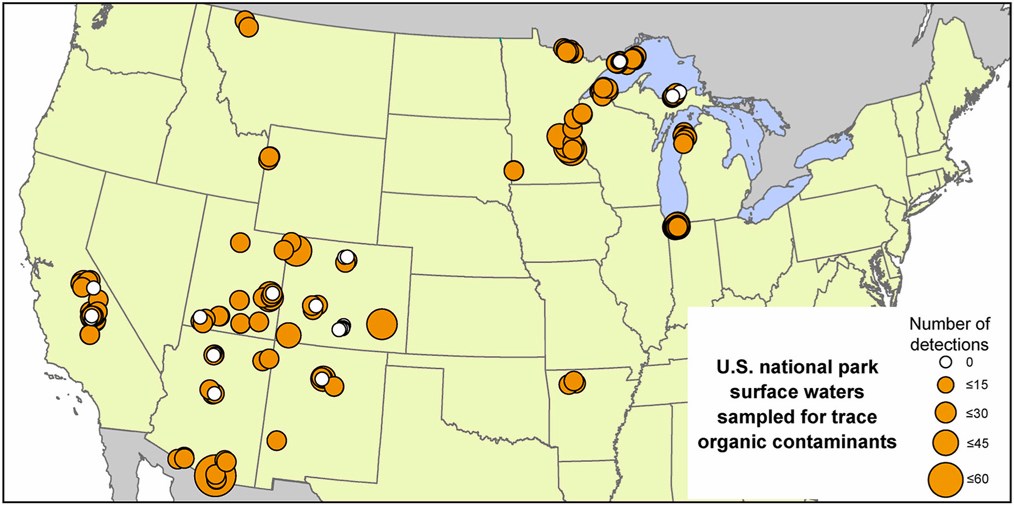Last updated: January 20, 2025
Article
Pharmaceuticals, Personal Care Products, and Pesticides in Park Waters
Scientists tested water samples from 46 national parks in the largest study of its kind.
By the editors of Park Science magazine

Image credit: Elliott and others. 2024. Trace Organic Contaminants in U.S. National Park Surface Waters: Prevalence and Ecological Context. Environmental Pollution 362: 125006.
Remember that insect repellent you used back in 2018 when you went camping and the bugs were really bad? Some of it may have ended up in a national park, even if you never went there. This is according to a study published in December 2024 in the journal Environmental Pollution.
The paper describes how, from 2009 to 2019, National Park Service and other scientists collected samples from water sources at 246 sites in 46 U.S. national parks. They tested the samples for pollutants like medicines, personal care products, and pesticides. Out of 340 potential pollutants, they found 155. Four of them were in greater than 20 percent of the water samples. These were DEET (a pesticide), theobromine (from caffeine), BPA (a plastic additive), and gabapentin (an anticonvulsant).
The scientists identified 27 pollutants, mainly pesticides—most of all DEET—at levels harmful to aquatic life. They determined that nearby wastewater treatment plants and farmlands were the most likely sources of pharmaceuticals and pesticides. This study of U.S. national park surface waters is the largest of its kind to date. It gives scientists baseline measurements to compare with future results and determine changes in water quality.
Elliott and others. 2024. Trace Organic Contaminants in U.S. National Park Surface Waters: Prevalence and Ecological Context. Environmental Pollution 362: 125006.
